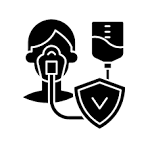Loan EMI Calculator
Total Down Payment (TDP)
(TDP = D + P)
Loan EMI (LE)
(PLA= A - D)
(PLA = Principal Loan Amount)
(LE = [PLA x R x
(1+R)^T]/[(1+R)^T-1] )
Total Interest Payable (TIP)
(TIP = LE * T)
Total Payment (TP)
(TP = LA + TIP + P)
Personal Loan
Unlock Your Dreams with Our Personal Loan Services
Are you dreaming of a new car, a dream vacation, home renovation, or simply need funds to manage unexpected expenses? Look no further! Our Personal Loan offering services are designed to help you turn your dreams into reality. With flexible terms, competitive interest rates, and a seamless application process, we are here to support you every step of the way.
Why Choose Our Personal Loan Services?
1. Flexibility: Our range of loan options allows you to choose the terms that suit your financial situation. Whether you need a short-term boost or a longer repayment period, we have you covered.
2. Competitive Interest Rates: We understand that the interest rate plays a crucial role in your decision-making process. That’s why we offer competitive rates, ensuring that you get the best value for your money.
3. Quick and Easy Application: Say goodbye to lengthy and complicated application processes. Our user-friendly online application makes it simple and convenient to apply for a personal loan from the comfort of your home.
4. Fast Approval: We know that your time is valuable. Our streamlined approval process means you can receive a decision on your loan application quickly, helping you get the funds you need when you need them.
5. Transparent Terms: No hidden surprises! We believe in transparent communication, and our loan terms are clear and easy to understand. You’ll know exactly what you’re getting into before you comm.
How It Works:
1. Apply Online: Fill out our secure online application form. It’s simple and takes just a few minutes.
2. Get Approved: Our team will review your application and provide you with a prompt decision on your loan approval.
3. Choose Your Terms: Once approved, you can choose the loan amount and repayment terms that align with your financial goals.
4. Receive Funds: As soon as you accept the terms, the funds will be deposited into your account. It’s that easy!
Eligibility Criteria
Our Personal Loan services are designed to cater to a wide range of individuals. To be eligible, you typically need to meet the following criteria:
- Be of legal age in your jurisdiction
- Have a steady source of income
- Meet any credit score requirements (credit score standards may vary)
Eligibility Criteria
- Be of legal age in your jurisdiction
- Have a steady source of income
- Meet any credit score requirements (credit score standards may vary)
Ready to Get Started?
- Be of legal age in your jurisdiction
- Have a steady source of income
- Meet any credit score requirements (credit score standards may vary)
Have Questions? Contact Our Support Team:
Don’t wait – turn your dreams into reality with our Personal Loan services! Apply now and experience the convenience and flexibility we have to offer.
Our mission is to safeguard every individual by offering personalized insurance advisory services to you and your loved ones. We are not just committed to creating the wealth but also to safeguarding the wealth by offering insurance services basic on our deep understanding of Indian communities and insurance market to secure you and your loved ones financially. Our aim is to empower individuals and families to make informed decisions regarding their health insurance needs.
Health Insurance help to cover all your medical expenses at your vulnerability state from unforeseen health-related costs, which can be overwhelming without adequate coverage or saving.
In India, 80% to 90% families are just one step away from getting into financial trouble if they proceed with any critical medical emergency treatment due to High Medical costs. As large portion of the population in India lacks sufficient savings or health insurance coverage to handle unexpected medical expenses it become very important have a right and unique health insurance as per your requirement.
Health insurance can be broadly categorized into several types:

Individual Health Insurance:
it usually covers the medical expenses of a single person i.e is policyholder/ insurance holder. It provides expenses such as hospitalization costs, surgeries, and other medical treatments.
Example:
An individual buys a health insurance policy with a sum insured of ₹5 lakh. If they are hospitalized due to illness or accident, the insurance company will cover the medical expenses up to ₹5 lakh.

Family Floater Policy:
This type is insurance is ideal for the family for more or equal to 2 persons, rather have individual policy respectively. It covers the entire family under a single sum insured. The coverage amount is shared among all family members, and it can be more cost-effective compared to buying separate policies for each member.
Example:
:A family floater policy with a sum insured of ₹10 lakh includes the policyholder, spouse, and two children. If any member is hospitalized, the total coverage available is ₹10 lakh, which can be used collectively for all members.

Critical Illness Insurance:
This policy provides coverage specifically for critical illnesses such as cancer, heart attack, stroke, etc. It offers a lump sum amount upon diagnosis of a covered illness, which can be used for treatment or other expenses.
Example:
A person purchases a critical illness policy with a sum assured of ₹20 lakh for conditions like cancer. If they are diagnosed with cancer, they receive ₹20 lakh to cover treatment costs.

Top-Up Health Insurance:
Top-up plans provide additional coverage over and above an existing health insurance policy. They are more affordable and help in increasing the coverage limit when the base policy’s sum insured is exhausted.
Example:
A person has a base health insurance policy with a sum insured of ₹5 lakh and buys a top-up policy with an additional ₹10 lakh coverage. If the medical expenses exceed ₹5 lakh, the top-up policy will cover the excess amount up to ₹10 lakh.

Personal Accident Insurance:
This type of insurance covers medical expenses and provides compensation for injuries, disabilities, or death resulting from accidents. It may also include benefits like accidental death coverage and disability benefits.
Example:
: A personal accident policy offers ₹10 lakh for accidental death and ₹5 lakh for permanent disability. If the insured person meets with an accident and sustains injuries, the policy will cover the treatment costs and provide compensation.

Maternity Insurance:
Maternity insurance covers expenses related to pregnancy, childbirth, and new-born care. It often includes pre and post-natal care, delivery charges, and vaccinations for the new-born.
Example:
A maternity policy with a sum insured of ₹50,000 covers expenses for delivery, including hospital charges and new-born care. If a woman gives birth, the policy will cover these costs up to the insured amount.

Senior Citizen Health Insurance:
Specifically designed for individuals above a certain age (usually 60 years), this policy covers health care needs for seniors, including hospitalization, pre-existing conditions, and other age-related illnesses.
Example:
A senior citizen health insurance policy with a sum insured of ₹3 lakh covers medical expenses for individuals aged 65. It includes coverage for treatments related to chronic diseases and hospitalization.

Group Health Insurance:
Typically provided by employers to employees, this policy covers a group of people under a single plan. It can be extended to family members as well and offers coverage for medical expenses.
Example:
An employer offers a group health insurance plan with a sum insured of ₹10 lakh for employees and their immediate family members. All covered individuals can claim medical expenses up to ₹10 lakh.

Critical Illness and Health Insurance Combo:
This type of policy combines health insurance with critical illness coverage, offering a comprehensive plan that covers regular medical expenses as well as critical illnesses.
Example:
A combo policy includes ₹5 lakh for general hospitalization and an additional ₹10 lakh for critical illnesses like heart attack and cancer. The policyholder gets coverage for both regular medical expenses and critical illnesses.
Health insurance can be broadly categorized into several types:

Individual Health Insurance:
it usually covers the medical expenses of a single person i.e is policyholder/ insurance holder. It provides expenses such as hospitalization costs, surgeries, and other medical treatments.
Example:
An individual buys a health insurance policy with a sum insured of ₹5 lakh. If they are hospitalized due to illness or accident, the insurance company will cover the medical expenses up to ₹5 lakh.

Family Floater Policy:
This type is insurance is ideal for the family for more or equal to 2 persons, rather have individual policy respectively. It covers the entire family under a single sum insured. The coverage amount is shared among all family members, and it can be more cost-effective compared to buying separate policies for each member.
Example:
:A family floater policy with a sum insured of ₹10 lakh includes the policyholder, spouse, and two children. If any member is hospitalized, the total coverage available is ₹10 lakh, which can be used collectively for all members.

Critical Illness Insurance:
This policy provides coverage specifically for critical illnesses such as cancer, heart attack, stroke, etc. It offers a lump sum amount upon diagnosis of a covered illness, which can be used for treatment or other expenses.
Example:
A person purchases a critical illness policy with a sum assured of ₹20 lakh for conditions like cancer. If they are diagnosed with cancer, they receive ₹20 lakh to cover treatment costs.

Top-Up Health Insurance:
Top-up plans provide additional coverage over and above an existing health insurance policy. They are more affordable and help in increasing the coverage limit when the base policy’s sum insured is exhausted.
Example:
A person has a base health insurance policy with a sum insured of ₹5 lakh and buys a top-up policy with an additional ₹10 lakh coverage. If the medical expenses exceed ₹5 lakh, the top-up policy will cover the excess amount up to ₹10 lakh.

Personal Accident Insurance:
This type of insurance covers medical expenses and provides compensation for injuries, disabilities, or death resulting from accidents. It may also include benefits like accidental death coverage and disability benefits.
Example:
: A personal accident policy offers ₹10 lakh for accidental death and ₹5 lakh for permanent disability. If the insured person meets with an accident and sustains injuries, the policy will cover the treatment costs and provide compensation.

Maternity Insurance:
Maternity insurance covers expenses related to pregnancy, childbirth, and new-born care. It often includes pre and post-natal care, delivery charges, and vaccinations for the new-born.
Example:
A maternity policy with a sum insured of ₹50,000 covers expenses for delivery, including hospital charges and new-born care. If a woman gives birth, the policy will cover these costs up to the insured amount.

Senior Citizen Health Insurance:
Specifically designed for individuals above a certain age (usually 60 years), this policy covers health care needs for seniors, including hospitalization, pre-existing conditions, and other age-related illnesses.
Example:
A senior citizen health insurance policy with a sum insured of ₹3 lakh covers medical expenses for individuals aged 65. It includes coverage for treatments related to chronic diseases and hospitalization.

Group Health Insurance:
Typically provided by employers to employees, this policy covers a group of people under a single plan. It can be extended to family members as well and offers coverage for medical expenses.
Example:
An employer offers a group health insurance plan with a sum insured of ₹10 lakh for employees and their immediate family members. All covered individuals can claim medical expenses up to ₹10 lakh.

Critical Illness and Health Insurance Combo:
This type of policy combines health insurance with critical illness coverage, offering a comprehensive plan that covers regular medical expenses as well as critical illnesses.
Example:
A combo policy includes ₹5 lakh for general hospitalization and an additional ₹10 lakh for critical illnesses like heart attack and cancer. The policyholder gets coverage for both regular medical expenses and critical illnesses.
At Marfo Strategies Pvt Ltd, we offer a user-friendly health insurance calculator that helps you assess your coverage needs based on factors such as age, health conditions, and family size. This tool enables you to estimate the premium amounts and sum insured required, making your planning process simpler and more effective.

Eligibility:
Age:
Most policies cater to individuals aged 18 and above.Health Status:
An assessment of pre-existing medical conditions may be required.Income Level:
Some insurers consider your financial capacity.
Required Documents:
Proof of Identity:
PAN card, Aadhar card, Passport.Proof of Address:
Utility bills, Rental agreement, Aadhar card.Medical Reports:
If required by the insurer.Income Proof:
Salary slips, Bank statements, IT returns. If required by the insurer.
Fill the form
Fill out the application form. It takes only 3 minutes!
Answer your phone
Have a quick chat with our representative to learn about your Health Insurance as per your requirement
Get a Life Insurance from best lender
Sit back and relax! You are on your way to secure yourself and your family.Our mission is to safeguard every individual by offering personalized insurance advisory services to you and your loved ones. We are not just committed to creating the wealth but also to safeguarding the wealth by offering insurance services basic on our deep understanding of Indian communities and insurance market to secure you and your loved ones financially. Our aim is to empower individuals and families to make informed decisions regarding their health insurance needs.
Health Insurance help to cover all your medical expenses at your vulnerability state from unforeseen health-related costs, which can be overwhelming without adequate coverage or saving.
In India, 80% to 90% families are just one step away from getting into financial trouble if they proceed with any critical medical emergency treatment due to High Medical costs. As large portion of the population in India lacks sufficient savings or health insurance coverage to handle unexpected medical expenses it become very important have a right and unique health insurance as per your requirement.
Health insurance can be broadly categorized into several types:

Individual Health Insurance:
it usually covers the medical expenses of a single person i.e is policyholder/ insurance holder. It provides expenses such as hospitalization costs, surgeries, and other medical treatments.
Example:
An individual buys a health insurance policy with a sum insured of ₹5 lakh. If they are hospitalized due to illness or accident, the insurance company will cover the medical expenses up to ₹5 lakh.

Family Floater Policy:
This type is insurance is ideal for the family for more or equal to 2 persons, rather have individual policy respectively. It covers the entire family under a single sum insured. The coverage amount is shared among all family members, and it can be more cost-effective compared to buying separate policies for each member.
Example:
:A family floater policy with a sum insured of ₹10 lakh includes the policyholder, spouse, and two children. If any member is hospitalized, the total coverage available is ₹10 lakh, which can be used collectively for all members.

Critical Illness Insurance:
This policy provides coverage specifically for critical illnesses such as cancer, heart attack, stroke, etc. It offers a lump sum amount upon diagnosis of a covered illness, which can be used for treatment or other expenses.
Example:
A person purchases a critical illness policy with a sum assured of ₹20 lakh for conditions like cancer. If they are diagnosed with cancer, they receive ₹20 lakh to cover treatment costs.

Top-Up Health Insurance:
Top-up plans provide additional coverage over and above an existing health insurance policy. They are more affordable and help in increasing the coverage limit when the base policy’s sum insured is exhausted.
Example:
A person has a base health insurance policy with a sum insured of ₹5 lakh and buys a top-up policy with an additional ₹10 lakh coverage. If the medical expenses exceed ₹5 lakh, the top-up policy will cover the excess amount up to ₹10 lakh.

Personal Accident Insurance:
This type of insurance covers medical expenses and provides compensation for injuries, disabilities, or death resulting from accidents. It may also include benefits like accidental death coverage and disability benefits.
Example:
: A personal accident policy offers ₹10 lakh for accidental death and ₹5 lakh for permanent disability. If the insured person meets with an accident and sustains injuries, the policy will cover the treatment costs and provide compensation.

Maternity Insurance:
Maternity insurance covers expenses related to pregnancy, childbirth, and new-born care. It often includes pre and post-natal care, delivery charges, and vaccinations for the new-born.
Example:
A maternity policy with a sum insured of ₹50,000 covers expenses for delivery, including hospital charges and new-born care. If a woman gives birth, the policy will cover these costs up to the insured amount.

Senior Citizen Health Insurance:
Specifically designed for individuals above a certain age (usually 60 years), this policy covers health care needs for seniors, including hospitalization, pre-existing conditions, and other age-related illnesses.
Example:
A senior citizen health insurance policy with a sum insured of ₹3 lakh covers medical expenses for individuals aged 65. It includes coverage for treatments related to chronic diseases and hospitalization.

Group Health Insurance:
Typically provided by employers to employees, this policy covers a group of people under a single plan. It can be extended to family members as well and offers coverage for medical expenses.
Example:
An employer offers a group health insurance plan with a sum insured of ₹10 lakh for employees and their immediate family members. All covered individuals can claim medical expenses up to ₹10 lakh.

Critical Illness and Health Insurance Combo:
This type of policy combines health insurance with critical illness coverage, offering a comprehensive plan that covers regular medical expenses as well as critical illnesses.
Example:
A combo policy includes ₹5 lakh for general hospitalization and an additional ₹10 lakh for critical illnesses like heart attack and cancer. The policyholder gets coverage for both regular medical expenses and critical illnesses.
Health insurance can be broadly categorized into several types:

Individual Health Insurance:
it usually covers the medical expenses of a single person i.e is policyholder/ insurance holder. It provides expenses such as hospitalization costs, surgeries, and other medical treatments.
Example:
An individual buys a health insurance policy with a sum insured of ₹5 lakh. If they are hospitalized due to illness or accident, the insurance company will cover the medical expenses up to ₹5 lakh.

Family Floater Policy:
This type is insurance is ideal for the family for more or equal to 2 persons, rather have individual policy respectively. It covers the entire family under a single sum insured. The coverage amount is shared among all family members, and it can be more cost-effective compared to buying separate policies for each member.
Example:
:A family floater policy with a sum insured of ₹10 lakh includes the policyholder, spouse, and two children. If any member is hospitalized, the total coverage available is ₹10 lakh, which can be used collectively for all members.

Critical Illness Insurance:
This policy provides coverage specifically for critical illnesses such as cancer, heart attack, stroke, etc. It offers a lump sum amount upon diagnosis of a covered illness, which can be used for treatment or other expenses.
Example:
A person purchases a critical illness policy with a sum assured of ₹20 lakh for conditions like cancer. If they are diagnosed with cancer, they receive ₹20 lakh to cover treatment costs.

Top-Up Health Insurance:
Top-up plans provide additional coverage over and above an existing health insurance policy. They are more affordable and help in increasing the coverage limit when the base policy’s sum insured is exhausted.
Example:
A person has a base health insurance policy with a sum insured of ₹5 lakh and buys a top-up policy with an additional ₹10 lakh coverage. If the medical expenses exceed ₹5 lakh, the top-up policy will cover the excess amount up to ₹10 lakh.

Personal Accident Insurance:
This type of insurance covers medical expenses and provides compensation for injuries, disabilities, or death resulting from accidents. It may also include benefits like accidental death coverage and disability benefits.
Example:
: A personal accident policy offers ₹10 lakh for accidental death and ₹5 lakh for permanent disability. If the insured person meets with an accident and sustains injuries, the policy will cover the treatment costs and provide compensation.

Maternity Insurance:
Maternity insurance covers expenses related to pregnancy, childbirth, and new-born care. It often includes pre and post-natal care, delivery charges, and vaccinations for the new-born.
Example:
A maternity policy with a sum insured of ₹50,000 covers expenses for delivery, including hospital charges and new-born care. If a woman gives birth, the policy will cover these costs up to the insured amount.

Senior Citizen Health Insurance:
Specifically designed for individuals above a certain age (usually 60 years), this policy covers health care needs for seniors, including hospitalization, pre-existing conditions, and other age-related illnesses.
Example:
A senior citizen health insurance policy with a sum insured of ₹3 lakh covers medical expenses for individuals aged 65. It includes coverage for treatments related to chronic diseases and hospitalization.

Group Health Insurance:
Typically provided by employers to employees, this policy covers a group of people under a single plan. It can be extended to family members as well and offers coverage for medical expenses.
Example:
An employer offers a group health insurance plan with a sum insured of ₹10 lakh for employees and their immediate family members. All covered individuals can claim medical expenses up to ₹10 lakh.

Critical Illness and Health Insurance Combo:
This type of policy combines health insurance with critical illness coverage, offering a comprehensive plan that covers regular medical expenses as well as critical illnesses.
Example:
A combo policy includes ₹5 lakh for general hospitalization and an additional ₹10 lakh for critical illnesses like heart attack and cancer. The policyholder gets coverage for both regular medical expenses and critical illnesses.
At Marfo Strategies Pvt Ltd, we offer a user-friendly health insurance calculator that helps you assess your coverage needs based on factors such as age, health conditions, and family size. This tool enables you to estimate the premium amounts and sum insured required, making your planning process simpler and more effective.

Eligibility:
Age:
Most policies cater to individuals aged 18 and above.Health Status:
An assessment of pre-existing medical conditions may be required.Income Level:
Some insurers consider your financial capacity.
Required Documents:
Proof of Identity:
PAN card, Aadhar card, Passport.Proof of Address:
Utility bills, Rental agreement, Aadhar card.Medical Reports:
If required by the insurer.Income Proof:
Salary slips, Bank statements, IT returns. If required by the insurer.
Fill the form
Fill out the application form. It takes only 3 minutes!
Answer your phone
Have a quick chat with our representative to learn about your Health Insurance as per your requirement
Get a Life Insurance from best lender
Sit back and relax! You are on your way to secure yourself and your family.Our mission is to safeguard every individual by offering personalized insurance advisory services to you and your loved ones. We are not just committed to creating the wealth but also to safeguarding the wealth by offering insurance services basic on our deep understanding of Indian communities and insurance market to secure you and your loved ones financially. Our aim is to empower individuals and families to make informed decisions regarding their health insurance needs.
Health Insurance help to cover all your medical expenses at your vulnerability state from unforeseen health-related costs, which can be overwhelming without adequate coverage or saving.
In India, 80% to 90% families are just one step away from getting into financial trouble if they proceed with any critical medical emergency treatment due to High Medical costs. As large portion of the population in India lacks sufficient savings or health insurance coverage to handle unexpected medical expenses it become very important have a right and unique health insurance as per your requirement.
Health insurance can be broadly categorized into several types:

Individual Health Insurance:
it usually covers the medical expenses of a single person i.e is policyholder/ insurance holder. It provides expenses such as hospitalization costs, surgeries, and other medical treatments.
Example:
An individual buys a health insurance policy with a sum insured of ₹5 lakh. If they are hospitalized due to illness or accident, the insurance company will cover the medical expenses up to ₹5 lakh.

Family Floater Policy:
This type is insurance is ideal for the family for more or equal to 2 persons, rather have individual policy respectively. It covers the entire family under a single sum insured. The coverage amount is shared among all family members, and it can be more cost-effective compared to buying separate policies for each member.
Example:
:A family floater policy with a sum insured of ₹10 lakh includes the policyholder, spouse, and two children. If any member is hospitalized, the total coverage available is ₹10 lakh, which can be used collectively for all members.

Critical Illness Insurance:
This policy provides coverage specifically for critical illnesses such as cancer, heart attack, stroke, etc. It offers a lump sum amount upon diagnosis of a covered illness, which can be used for treatment or other expenses.
Example:
A person purchases a critical illness policy with a sum assured of ₹20 lakh for conditions like cancer. If they are diagnosed with cancer, they receive ₹20 lakh to cover treatment costs.

Top-Up Health Insurance:
Top-up plans provide additional coverage over and above an existing health insurance policy. They are more affordable and help in increasing the coverage limit when the base policy’s sum insured is exhausted.
Example:
A person has a base health insurance policy with a sum insured of ₹5 lakh and buys a top-up policy with an additional ₹10 lakh coverage. If the medical expenses exceed ₹5 lakh, the top-up policy will cover the excess amount up to ₹10 lakh.

Personal Accident Insurance:
This type of insurance covers medical expenses and provides compensation for injuries, disabilities, or death resulting from accidents. It may also include benefits like accidental death coverage and disability benefits.
Example:
: A personal accident policy offers ₹10 lakh for accidental death and ₹5 lakh for permanent disability. If the insured person meets with an accident and sustains injuries, the policy will cover the treatment costs and provide compensation.

Maternity Insurance:
Maternity insurance covers expenses related to pregnancy, childbirth, and new-born care. It often includes pre and post-natal care, delivery charges, and vaccinations for the new-born.
Example:
A maternity policy with a sum insured of ₹50,000 covers expenses for delivery, including hospital charges and new-born care. If a woman gives birth, the policy will cover these costs up to the insured amount.

Senior Citizen Health Insurance:
Specifically designed for individuals above a certain age (usually 60 years), this policy covers health care needs for seniors, including hospitalization, pre-existing conditions, and other age-related illnesses.
Example:
A senior citizen health insurance policy with a sum insured of ₹3 lakh covers medical expenses for individuals aged 65. It includes coverage for treatments related to chronic diseases and hospitalization.

Group Health Insurance:
Typically provided by employers to employees, this policy covers a group of people under a single plan. It can be extended to family members as well and offers coverage for medical expenses.
Example:
An employer offers a group health insurance plan with a sum insured of ₹10 lakh for employees and their immediate family members. All covered individuals can claim medical expenses up to ₹10 lakh.

Critical Illness and Health Insurance Combo:
This type of policy combines health insurance with critical illness coverage, offering a comprehensive plan that covers regular medical expenses as well as critical illnesses.
Example:
A combo policy includes ₹5 lakh for general hospitalization and an additional ₹10 lakh for critical illnesses like heart attack and cancer. The policyholder gets coverage for both regular medical expenses and critical illnesses.
Health insurance can be broadly categorized into several types:

Individual Health Insurance:
it usually covers the medical expenses of a single person i.e is policyholder/ insurance holder. It provides expenses such as hospitalization costs, surgeries, and other medical treatments.
Example:
An individual buys a health insurance policy with a sum insured of ₹5 lakh. If they are hospitalized due to illness or accident, the insurance company will cover the medical expenses up to ₹5 lakh.

Family Floater Policy:
This type is insurance is ideal for the family for more or equal to 2 persons, rather have individual policy respectively. It covers the entire family under a single sum insured. The coverage amount is shared among all family members, and it can be more cost-effective compared to buying separate policies for each member.
Example:
:A family floater policy with a sum insured of ₹10 lakh includes the policyholder, spouse, and two children. If any member is hospitalized, the total coverage available is ₹10 lakh, which can be used collectively for all members.

Critical Illness Insurance:
This policy provides coverage specifically for critical illnesses such as cancer, heart attack, stroke, etc. It offers a lump sum amount upon diagnosis of a covered illness, which can be used for treatment or other expenses.
Example:
A person purchases a critical illness policy with a sum assured of ₹20 lakh for conditions like cancer. If they are diagnosed with cancer, they receive ₹20 lakh to cover treatment costs.

Top-Up Health Insurance:
Top-up plans provide additional coverage over and above an existing health insurance policy. They are more affordable and help in increasing the coverage limit when the base policy’s sum insured is exhausted.
Example:
A person has a base health insurance policy with a sum insured of ₹5 lakh and buys a top-up policy with an additional ₹10 lakh coverage. If the medical expenses exceed ₹5 lakh, the top-up policy will cover the excess amount up to ₹10 lakh.

Personal Accident Insurance:
This type of insurance covers medical expenses and provides compensation for injuries, disabilities, or death resulting from accidents. It may also include benefits like accidental death coverage and disability benefits.
Example:
: A personal accident policy offers ₹10 lakh for accidental death and ₹5 lakh for permanent disability. If the insured person meets with an accident and sustains injuries, the policy will cover the treatment costs and provide compensation.

Maternity Insurance:
Maternity insurance covers expenses related to pregnancy, childbirth, and new-born care. It often includes pre and post-natal care, delivery charges, and vaccinations for the new-born.
Example:
A maternity policy with a sum insured of ₹50,000 covers expenses for delivery, including hospital charges and new-born care. If a woman gives birth, the policy will cover these costs up to the insured amount.

Senior Citizen Health Insurance:
Specifically designed for individuals above a certain age (usually 60 years), this policy covers health care needs for seniors, including hospitalization, pre-existing conditions, and other age-related illnesses.
Example:
A senior citizen health insurance policy with a sum insured of ₹3 lakh covers medical expenses for individuals aged 65. It includes coverage for treatments related to chronic diseases and hospitalization.

Group Health Insurance:
Typically provided by employers to employees, this policy covers a group of people under a single plan. It can be extended to family members as well and offers coverage for medical expenses.
Example:
An employer offers a group health insurance plan with a sum insured of ₹10 lakh for employees and their immediate family members. All covered individuals can claim medical expenses up to ₹10 lakh.

Critical Illness and Health Insurance Combo:
This type of policy combines health insurance with critical illness coverage, offering a comprehensive plan that covers regular medical expenses as well as critical illnesses.
Example:
A combo policy includes ₹5 lakh for general hospitalization and an additional ₹10 lakh for critical illnesses like heart attack and cancer. The policyholder gets coverage for both regular medical expenses and critical illnesses.
At Marfo Strategies Pvt Ltd, we offer a user-friendly health insurance calculator that helps you assess your coverage needs based on factors such as age, health conditions, and family size. This tool enables you to estimate the premium amounts and sum insured required, making your planning process simpler and more effective.

Eligibility:
Age:
Most policies cater to individuals aged 18 and above.Health Status:
An assessment of pre-existing medical conditions may be required.Income Level:
Some insurers consider your financial capacity.
Required Documents:
Proof of Identity:
PAN card, Aadhar card, Passport.Proof of Address:
Utility bills, Rental agreement, Aadhar card.Medical Reports:
If required by the insurer.Income Proof:
Salary slips, Bank statements, IT returns. If required by the insurer.
Fill the form
Fill out the application form. It takes only 3 minutes!
Answer your phone
Have a quick chat with our representative to learn about your Health Insurance as per your requirement
Get a Life Insurance from best lender
Sit back and relax! You are on your way to secure yourself and your family.Health Insurance FAQs
Health insurance is a policy between the individual and the insurance company where the latter covers the medical expenses arising out of illness or injury. It will cover costs from hospitalization to surgery, medication, and all other healthcare-related costs, contingent upon the policy terms.
Individual, family, and senior citizen health insurances are available. The eligibility may vary with different plan types, but any member from newborns to seniors can be covered under normal conditions. Pre-existing conditions may affect eligibility or premium rates.
Some of the common health insurance plans available in the market are Individual Health Insurance, Family Floater Plans, Critical Illness Insurance, Senior Citizen Health Insurance, Group Health Insurance, and Top-Up/ Super Top-Up Plans. Each of these has a different perspective on meeting varied health needs.
Pre-existing Condition: Any health disorder/illness that already existed when an individual took the health insurance policy. Pre-existing conditions are excluded or have a waiting period for covering diseases. Series of measures against the risk 5. Waiting Period in Health Insurance: The waiting period means the time after which the particular condition or treatment is covered by the health insurance policy. The standard examples of waiting periods include 30 days for general illness, 2-4 years for pre-existing conditions, and up to 1 year for specific treatments.
Cashless hospitalization refers to the facility wherein the insurer pays directly to the hospital for the medical expenses incurred so that the policyholder need not pay an upfront amount. This facility is provided at network hospitals that are tied up with the insurance company.
These are ailments or treatments not covered under the health insurance policy. There are standard exclusions for any health insurance policy, such as cosmetic surgery, dental treatment unless it forms a part of an accident, self-inflicted injuries, and substance abuse treatments.
The premium of health insurance depends on several factors that include but are not limited to your age, health status, and habits of living, the amount and type of coverage, and your geographic location. Basically speaking, high coverage means high premiums and vice-versa, and this increases with age.
Yes, you can add your family members in your health insurance policy by Family Floater Plan that covers the whole family on a single policy. The sum insured is shared among all the covered members..
Generally, health insurance is renewable yearly. You can easily renew your policy by making a premium payment before the due date either online or offline. This way, you get to enjoy continuity and do not forfeit any accrued benefit, like a no-claim bonus or cover of pre-existing conditions.
Health insurance can cover a wide range of medical expenses, from hospitalization and surgeries to doctor consultations, prescription medicines, diagnosis, and preventive care like vaccinations and health check-ups.
Yes, many health insurance schemes cover the preventive treatment costs, including an annual health check-up, vaccination, and screening. The purpose of preventive care is to detect and manage, if possible, the problem at a very early stage.
Yes, a few health insurances do cover maternity benefits, which include pre-natal and post-natal care for both the mother and the new born along with delivery expenses. Maternity cover usually has a waiting period and hence requires one to plan in advance.
Yes, health insurance can be very useful for taking proper care of chronic ailments like diabetes, hypertension, or asthma. Policies may cover regular doctor visits, medications, and ongoing treatments; however, some chronic conditions might have waiting periods or specific exclusions.
With some health insurance plans, there is international coverage in case one has a medical emergency when traveling outside the United States. These, by definition, might include hospitalization, evacuation, and repatriation. Of course, it would be best to check out the policy to actually see what international coverage entails.
Health Insurance FAQs
Health insurance is a policy between the individual and the insurance company where the latter covers the medical expenses arising out of illness or injury. It will cover costs from hospitalization to surgery, medication, and all other healthcare-related costs, contingent upon the policy terms.
Individual, family, and senior citizen health insurances are available. The eligibility may vary with different plan types, but any member from newborns to seniors can be covered under normal conditions. Pre-existing conditions may affect eligibility or premium rates.
Some of the common health insurance plans available in the market are Individual Health Insurance, Family Floater Plans, Critical Illness Insurance, Senior Citizen Health Insurance, Group Health Insurance, and Top-Up/ Super Top-Up Plans. Each of these has a different perspective on meeting varied health needs.
Pre-existing Condition: Any health disorder/illness that already existed when an individual took the health insurance policy. Pre-existing conditions are excluded or have a waiting period for covering diseases. Series of measures against the risk 5. Waiting Period in Health Insurance: The waiting period means the time after which the particular condition or treatment is covered by the health insurance policy. The standard examples of waiting periods include 30 days for general illness, 2-4 years for pre-existing conditions, and up to 1 year for specific treatments.
Cashless hospitalization refers to the facility wherein the insurer pays directly to the hospital for the medical expenses incurred so that the policyholder need not pay an upfront amount. This facility is provided at network hospitals that are tied up with the insurance company.
These are ailments or treatments not covered under the health insurance policy. There are standard exclusions for any health insurance policy, such as cosmetic surgery, dental treatment unless it forms a part of an accident, self-inflicted injuries, and substance abuse treatments.
The premium of health insurance depends on several factors that include but are not limited to your age, health status, and habits of living, the amount and type of coverage, and your geographic location. Basically speaking, high coverage means high premiums and vice-versa, and this increases with age.
Yes, you can add your family members in your health insurance policy by Family Floater Plan that covers the whole family on a single policy. The sum insured is shared among all the covered members..
Generally, health insurance is renewable yearly. You can easily renew your policy by making a premium payment before the due date either online or offline. This way, you get to enjoy continuity and do not forfeit any accrued benefit, like a no-claim bonus or cover of pre-existing conditions.
Health insurance can cover a wide range of medical expenses, from hospitalization and surgeries to doctor consultations, prescription medicines, diagnosis, and preventive care like vaccinations and health check-ups.
Yes, many health insurance schemes cover the preventive treatment costs, including an annual health check-up, vaccination, and screening. The purpose of preventive care is to detect and manage, if possible, the problem at a very early stage.
Yes, a few health insurances do cover maternity benefits, which include pre-natal and post-natal care for both the mother and the new born along with delivery expenses. Maternity cover usually has a waiting period and hence requires one to plan in advance.
Yes, health insurance can be very useful for taking proper care of chronic ailments like diabetes, hypertension, or asthma. Policies may cover regular doctor visits, medications, and ongoing treatments; however, some chronic conditions might have waiting periods or specific exclusions.
With some health insurance plans, there is international coverage in case one has a medical emergency when traveling outside the United States. These, by definition, might include hospitalization, evacuation, and repatriation. Of course, it would be best to check out the policy to actually see what international coverage entails.


